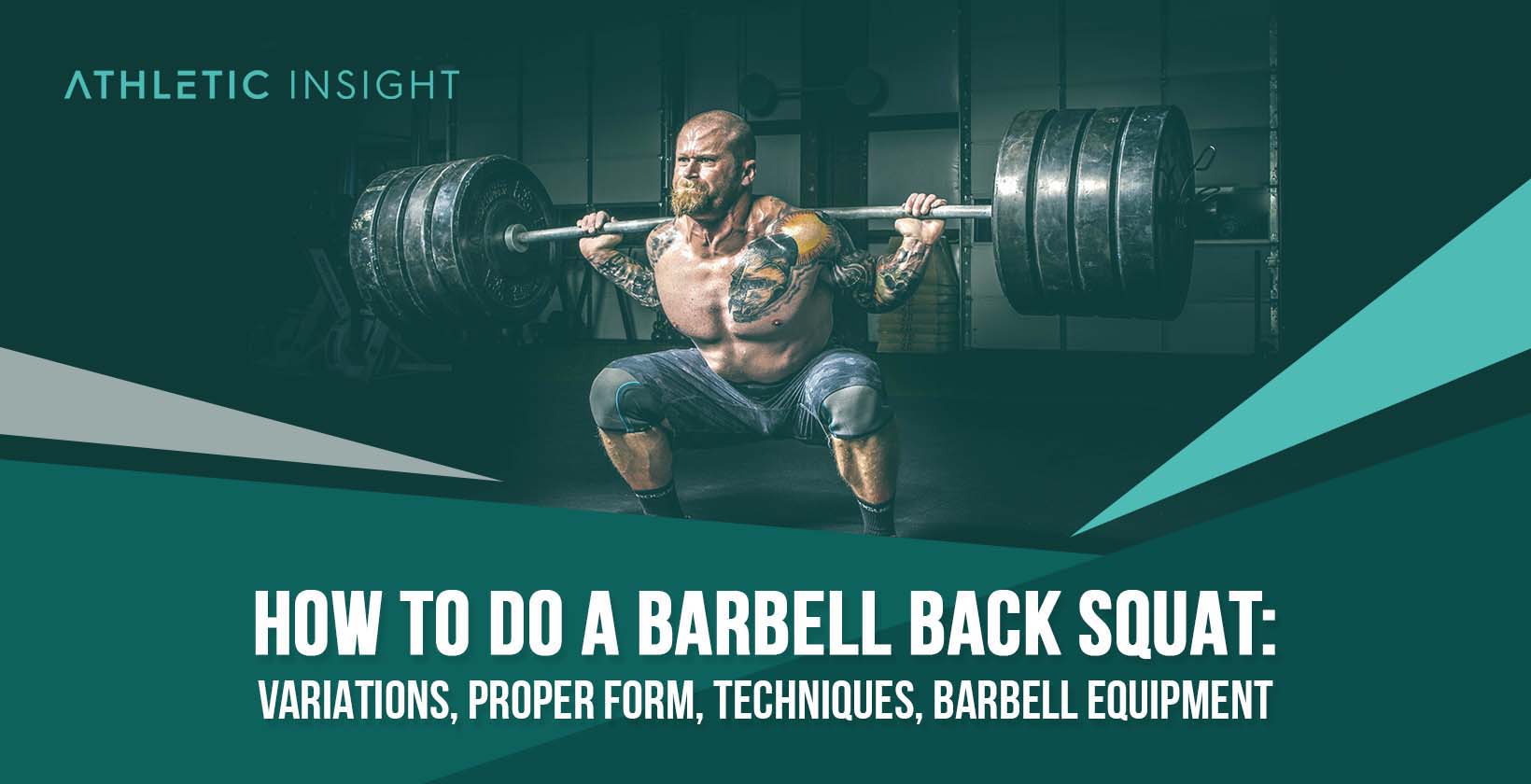The barbell back squat is a compound exercise that works the quadriceps, hamstring, gluteus maximus, gluteus minimus, adductor magnus, spinal erectors, and core muscles. Often referred to as the king of leg exercises, it’s a great way to work all your leg muscles in a short amount of time, rather than doing a bunch of exercises.
The barbell back squat is a movement typically performed in a squat rack, where a barbell is placed on the back and loaded with weight. By squatting down, the load works on the leg muscles. The squat breaks down muscle fibers, which leads to muscle growth.
While the barbell back squat is an Olympic lift and a Strongman exercise, the back squat is for any athlete looking to build muscle and strength in the legs. That includes sports athletes, Crossfit competitors, and even bodybuilders.
While the barbell back squat is an effective exercise for all athletes to train, it is recommended that only advanced weightlifters perform the movement. If the improper form is practiced, it may lead to serious shoulder, elbow, back, or spinal injuries. However, once the proper form is mastered, a weightlifter can then start to add more weight.
How to Perform Barbell Back Squat With Proper Form?
Start by setting the safety pins just below head height. Finish the set by leaning forward and dropping the bar into the safeties. You don’t want to have to hop on your tippy-toes when you are exhausted and risk hurting yourself re-racking the bar.

Get your entire body under the bar and place it on top of your trap muscles, just behind your neck. Squeeze your glute muscles to unrack the bar.
Keep your head stationary throughout the movement. It is advantageous to stare at an object in front of you to help with this. If your chin drops, it can cause you to lean forward and round your back.
Keep your chest up and back straight. Dropping your chest will cause you to lean forward, rounding your back and resulting in injury.
Keep your feet planted firmly on the ground throughout the entire movement. If your feet lift at all, it will place unnecessary tension on your ankles and set you off balance. This will also help you press off the ground, delivering more power as you press up out of the squat.
Grip the barbell as tight as you can with your hands during the squat. This tightens and engages your upper back, ensuring further stability. Proper form will allow the most muscle gain from the leg exercise without injuring yourself.
What are the Benefits of Barbell Back Squat?
The barbell back squat provides many benefits such as the following.
- Increases lower back strength
- Increases your lower body strength
- Develops a strong core and torso
- Improve your body awareness and coordination
- Improve your resiliency in sports and everyday life
1. Increases lower back strength
The spinal erectors help stabilize the lower back and prevent it from rounding during the squat. By strengthening the lower back, you prevent possible injuries. The lower back is susceptible to injury in many exercises in the gym, so strengthening is a way to prevent this.
Improving the strength of the back is also a great way to improve posture. Back muscles protect the spine from restriction, further preventing injury.
2. Increases your lower body strength
It’s no surprise that squats are great for lower body strength as they work the entire lower body. Since numerous muscle groups work together, you can stack on heavyweight to overload the lower body muscles. This results in more muscle breakdown and growth.
Having more lower body strength prevents injuries. Ankle and knee injuries are common and are preventable by having more lower-body muscle mass. The rehabilitation process is quicker if you have more muscle on your legs.
3. Develops a strong core and torso
Squats increase the strength of the core muscles as they stabilize the body during the movement. A strong core translates to many other exercises, such as the overhead press and barbell row. A strong core is also a very aesthetically pleasing look that many people strive to achieve.
Everyday actions require core strength. Any twisting, bending, or lifting act on the core for assistance. You will notice an increase in balance and stability as you increase the strength of your core. This reduces the risk of injury due to accidental falls or slips.
4. Improve your body awareness and coordination
Since so many muscle groups activate during the squat, it helps increase body awareness. You have to mentally focus on many different things when squatting to master your form. You must keep your chest up, back straight, and engage your muscles, all with a heavy load on top of your shoulders.
Flexing certain muscle groups and feeling the strain in them improves body awareness. For example, you may not contract your glutes or adductor magnus muscles until you have performed the squat and felt those muscles working.
5. Improve your resiliency in sports and everyday life
The legs are a huge factor in sports. Running, jumping, and kicking are all skills impacted by leg muscles. You will notice that you can sprint faster and jump higher after frequent leg training. Strong leg muscles from the squat will also prevent sports injury. Being injured can make you miss a game or tournament.
What are the Phases of Barbell Back Squat?
There are two phases of the barbell back squat. They include the lowering phase mechanics and muscle activation (eccentric movement), and the standing phase mechanics and muscle activation (concentric movement).
1. Lowering Phase Mechanics and Muscle Activation
After the bar is on the back, take a deep breath before descending into the squat.
The hips should bend to initiate the squat as the person drops down. Keep your head in a stationary position while staring straight forward.
The chest must remain up and the back straight. Balance and proper position must be maintained. The person should not lean forward or side to side.
The descent must be slow and controlled. Speed should never increase or decrease but instead, remain constant.
If the speed is too quick, you risk losing form. If the speed is too slow, you won’t drive enough force out of the bottom of the movement to spring the weight back up.
Once the person has reached desired depth (usually parallel), they begin the ascent.
2. Standing Phase Mechanics and Muscle Activation
Return to the starting position by reversing the movement. The feet and calves should press away from the ground as hard as possible to create force.
The glutes and hips will drive the body upwards. The shoulders and hips should rise at the same speed. Keep the chest upright and the back straight.
The feet must stay planted firmly against the ground. The core and upper back must remain engaged to shoot out of the squat.
Make sure the butt does not rise before the chest as it causes you to lean forward and round the back.
Keep the air in the lungs until the rep is complete. Otherwise, it will be hard to keep a straight back.
What are the Mistakes for Barbell Back Squat Form?
These are common Barbell Back Squat Mistakes that you want to watch out for when squatting.
- Letting the chest drop
- Moving the head or neck
- Not warming up
- Half-repping
Keeping the chest up is a great way to prevent lower back rounding. The head and neck must also remain stationary to balance.
Not warming up can also result in injury. Stretch out all the leg muscles to prevent tightness and get the blood flowing through the muscles. This prevents muscle tears. Do a few sets with lighter weight before going heavy to prepare the muscles for the heavier loads.
Not squatting low enough prevents the legs from properly being worked. This results in very little muscle and strength gains. The knees should remain over the toes throughout the movement. If they collapse inwards, it places stress on the knees and ankles.
How to Determine Proper Weight for the Barbell Back Squat?
If you cannot complete a rep with proper form, the weight is too heavy. Always start with the bar without any weight on it. Ensure that you can complete a rep with the correct form and then start slowly adding weight.
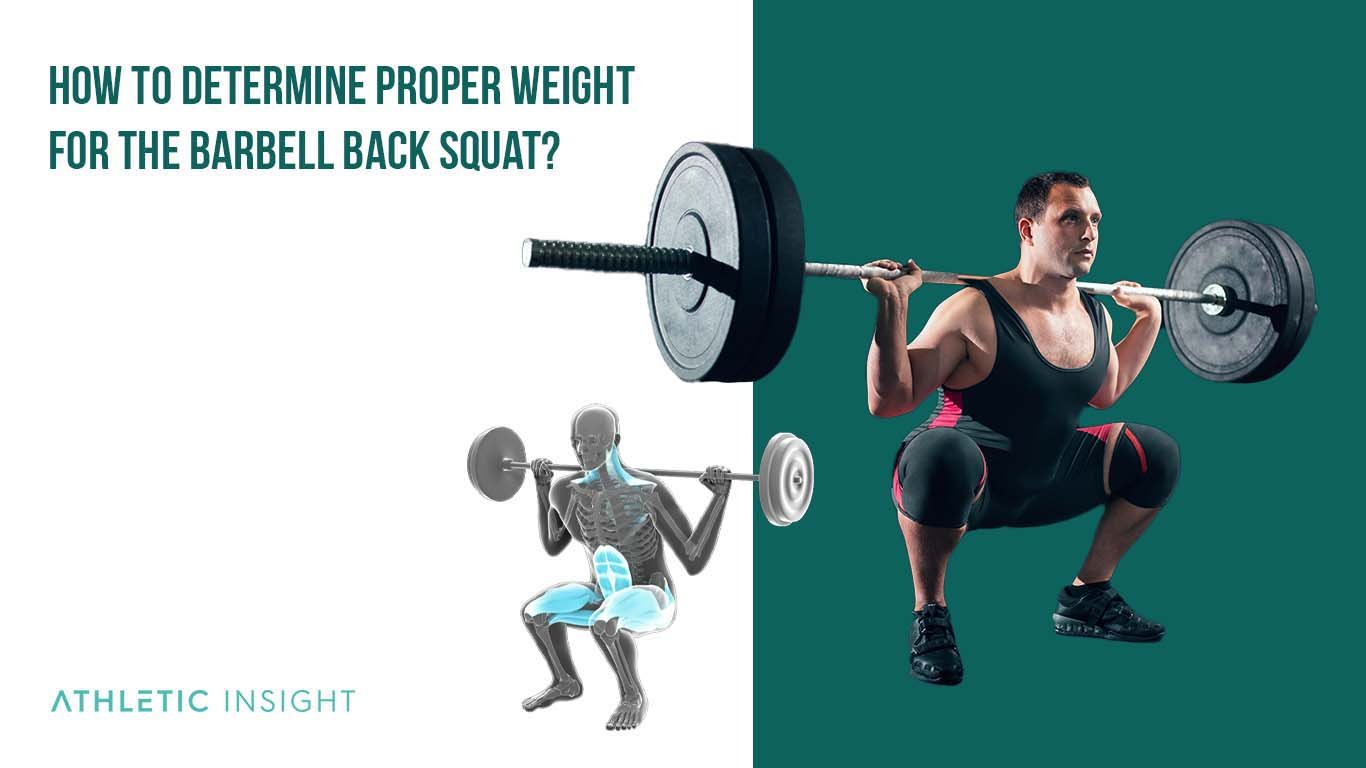
Then add a 10lb plate to each side of the bar and determine if you can do that weight properly. Continue this until the weight gets too heavy. When your form starts to slip, reduce the weight.
If your goal is muscle gain, then do 8-10 reps with your working weight. Find a weight that allows your form to fail in the 8 to 10 rep range.
If you are descending too fast, rounding your back, or breaking any of the other form rules listed in this article, the weight is too heavy.
What is the Importance of Grip for Barbell Back Squat?
Grip positioning is crucial in the back squat because it creates upper back tension. This allows the back to stay tight during the movement, preventing rounding.
Grip width will vary as everyone has different arm lengths. Do what feels most comfortable for you while allowing the most back tension. For most people, this is just outside shoulder width.
If your grip is too narrow, you may experience wrist and elbow pain. If your grip is too wide, it will be difficult to keep your back tight.
You should keep the barbell stacked over the wrists while squatting. The elbows and wrist should be directly under the hands. This mitigates wrist pain.
Remember that squeezing the bar also assists with creating back tension.
Which Muscles are Involved While Performing Barbell Back Squats?
Knee extension is at the greatest extent the lower you go into your squat. The quadriceps are responsible for knee extension and are worked the most the lower you squat.
Your hip extensors are responsible for helping you drive out of the squat back to the starting position. The glute muscles make up the hip extensors. Contract the glutes at the top of the movement to place even more tension on them.
The hamstrings also assist the glutes in hip extension. The hamstring’s role is to stabilize the knee joints as the load is placed on them. This keeps the knees healthy and free of injury.
The adductor magnus muscles are found on the inner thigh and play a role in hip joint flexion.
The spinal erectors found in the back assist with keeping the spine stable and stiff during the squat. Preventing rounding of the back will prevent serious injury as it shifts the load from the barbell onto the lower back.
The core muscles, including the abdominals and obliques, play an important role in stability while squatting. They prevent the spine from extending or twisting while squatting heavyweights. While squats strengthen the core, abdominal training is still required to grow ab muscles.
The calves also play a minor role in the squat, helping spring out of the bottom of the squat. Squats alone will not benefit calf growth to a great extent. Calf isolation exercises should be added to any leg routine.
How to Master Barbell Back Squat?
Here are the steps to dominate the barbell back squat.
- Pick up the bar from the rack using your back shoulder muscles
- Take two big steps backwards
- Stand shoulder-width apart with toes pointed slightly out
- Squat by sitting back and down as if aiming for a chair
- Reduce your descent until your hip crease is below or level with your knee
- Keep your weight on your heels as you drive back up
1. Pick up the bar from the rack using your back shoulder muscles
The trap muscles are the thickest part of the upper back and provide a sturdy place for the bar to rest.
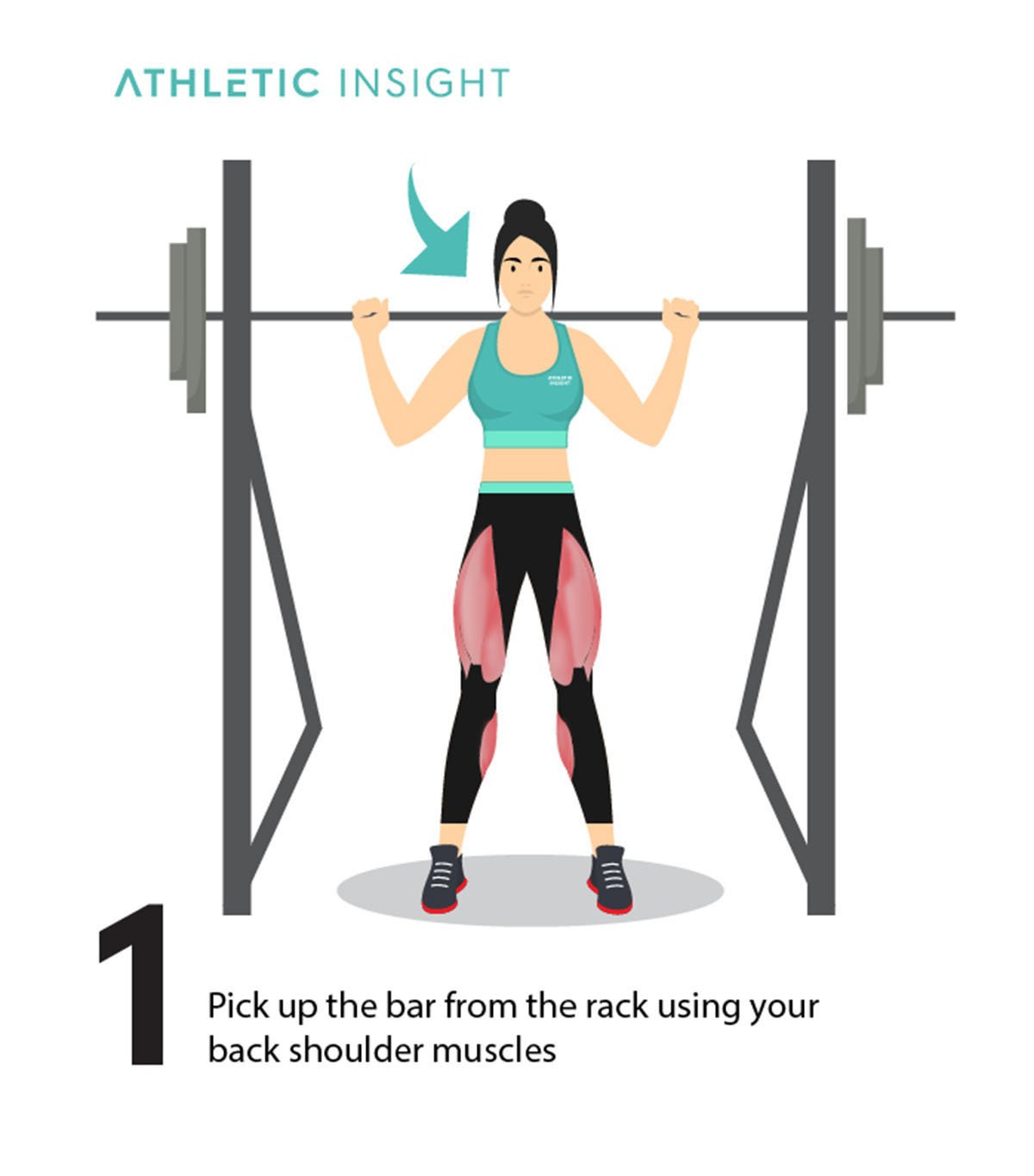
2. Take two big steps backwards
Taking two steps allows you to get the bar from under the safeties and safely squat without hitting them. Practice your steps so that you are in a position to squat always after your 2nd step.

3. Stand shoulder-width apart with toes pointed slightly out
By slightly pointing your toes out, you increase balance and allow yourself to squat deeper. With the toes pointed straight forward, your hip flexors will be a lot tighter, making it difficult to go deep.

Keep your knees in line with your toes. The main thing you want to avoid is your knees turning inwards as you descend in your squat.
4. Squat by sitting back and down as if aiming for a chair
This allows you to squat the buttocks down without placing tension on the knees or causing the body to tilt forward. Maintain spinal alignment by staring two meters forward on the floor. By staring at the same spot throughout the squat, your head will remain in the same position. You will also keep your spine straight, preventing injury.
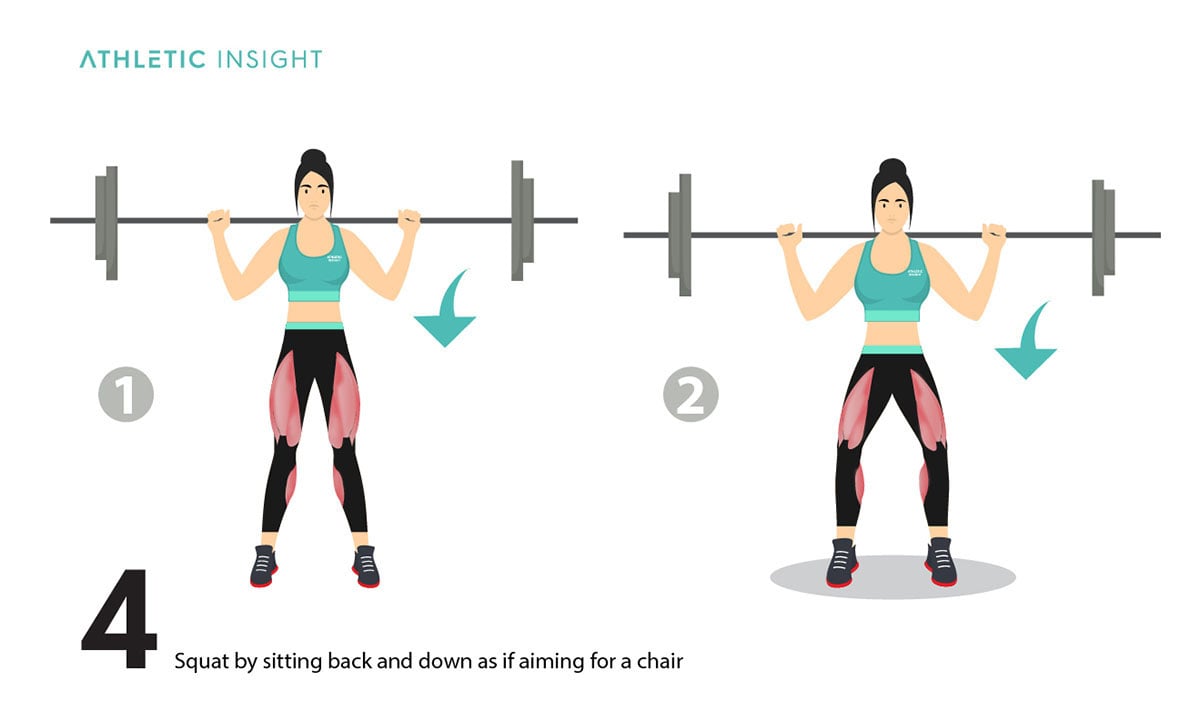
5. Reduce your descent until your hip crease is below or level with your knee
This is known as parallel and is the spot that most people aim to squat for. Going any lower can cause pain and tightness. Not going this low doesn’t work the legs as much.
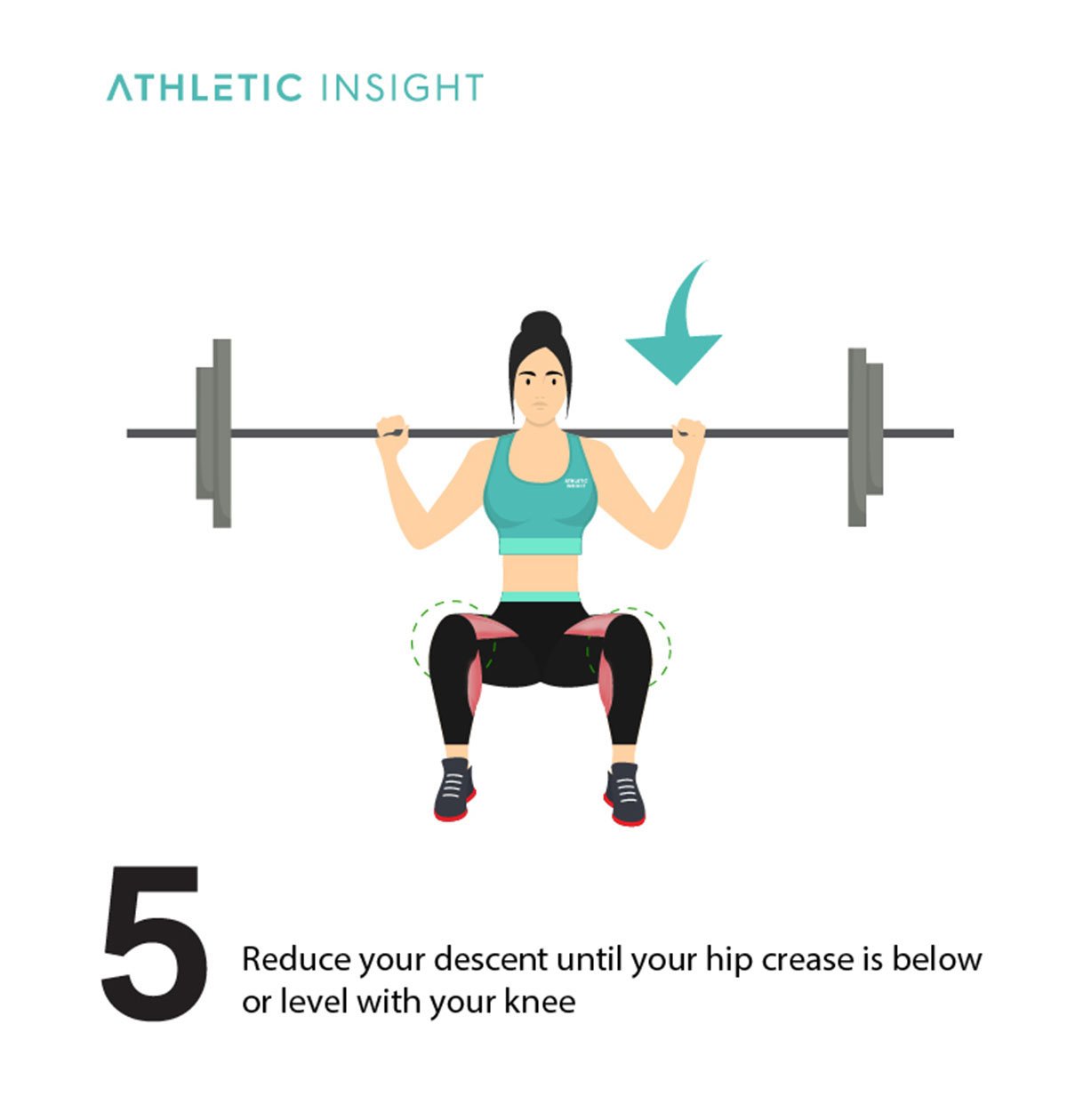
6. Keep your weight on your heels as you drive back up
Pushing through your heels drives the most force, allowing you to get the weight back up.
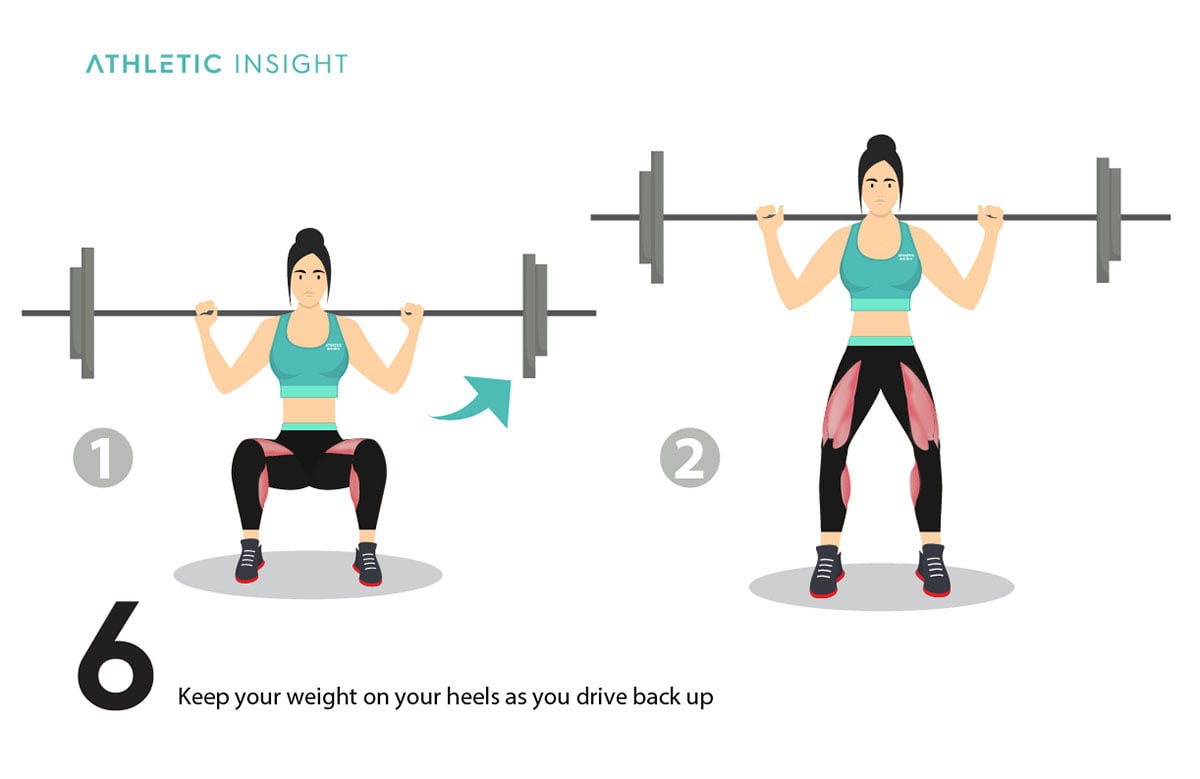
What are the Barbell Back Squat Variations?
A barbell back squat variation is any other type of squat. Variations usually focus on different muscle groups and will help you increase your back squat.
1. Front Squat
The barbell rests in front of the anterior delts and the tension is placed mainly on the quads. The glutes are not activated as much as in the back squat. The center of gravity shifts forward when compared to the back squat. The front squat puts less pressure on the back since the bar isn’t rested directly above it. If you’re looking for a variation to increase quad activation, then the front squat is a great choice.
2. Goblet Squat
The goblet squat mimics the same form as a back squat. A dumbbell is held rather than a barbell. It is a great way to learn squat form and translate it to your back squat. It’s also recommended for beginners as the weight isn’t as heavy because the barbell can be intimidating.
What is the Necessary Equipment for Barbell Back Squat?
The required gym equipment is a squat rack and a barbell with plates. This is the only equipment required, but there are some additional things you may consider adding.

Flat soled shoes are the best as they provide a sturdy surface to push off. A lifting belt is a great way to assist with bracing the core and preventing the back from rounding while squatting. Knee sleeves may also be beneficial to those with knee issues.
What are the World Records for Barbell Back Squats?
Nathan Baptist holds the record for the heaviest raw squat of all time. The super heavyweight squatted 595 kg or 1 331 lbs at the 2021 United Powerlifting Association Utah Kick-Off Meet on Feb.6, 2021.
Each contestant in the meeting must show proof of a UPA membership card and meet the weight requirements at the weigh-in. Rules have to be followed or the contestant risks disqualification.
Leah Reichman holds the highest female ATWR squat. She squatted 419kg or 924lbs at the 2021 American Powerlifting Federation (APF) Cincinnati Women’s Pro/Am on April.11, 2021.
Contestants must be aware of all rules and make weigh-ins.
What is the Origin of Barbell Back Squat?
In the early 1900s, the back squat was known as the deep knee bend. In 1921, Heinrich Steinborn was credited for creating the squat. This was before squat racks were invented so it had to be performed by tilting a barbell so that it was vertical and then shifting it onto the shoulders.
Later in the 1920s and 1930s, the squat rack was created, and the squat that we know today was performed.
Which Muscles can be Affected More From Barbell Back Squat?
These are the primary muscles most affected by the back squat.
- Quadriceps
- Adductor magnus
- Gluteus maximus
The quadriceps and glutes are the muscles worked on the most in the squat. They are known as agonist muscle groups as they are the prime movers. The lower the body goes, the more knee flexion occurs, resulting in more quad activation.
The glutes are responsible for extending the hips at the top of the squat and for abducting the hips throughout the movement. The adductor magnus is a synergist muscle meaning that it’s a secondary muscle group that assists the agonist’s muscles. It does so as it assists with hip extension.
What is the Effectiveness of Barbell Back Squat for Muscle Growth
Working multiple muscle groups makes the back squat great for muscle growth. It is an exercise that can be loaded with heavyweight, overloading the muscles and providing muscle growth.
Placing the muscles under heavy loads leads to muscle fibers breaking down. This leads to the muscles rebuilding bigger and stronger.
A study taking 24 women showed an increase in quadriceps growth and gluteus growth after squatting for 6 sets per week for 12 weeks.
What is the Barbell Back Squat Related Facts?
After regularly implementing back squats into your training, you can expect the following.
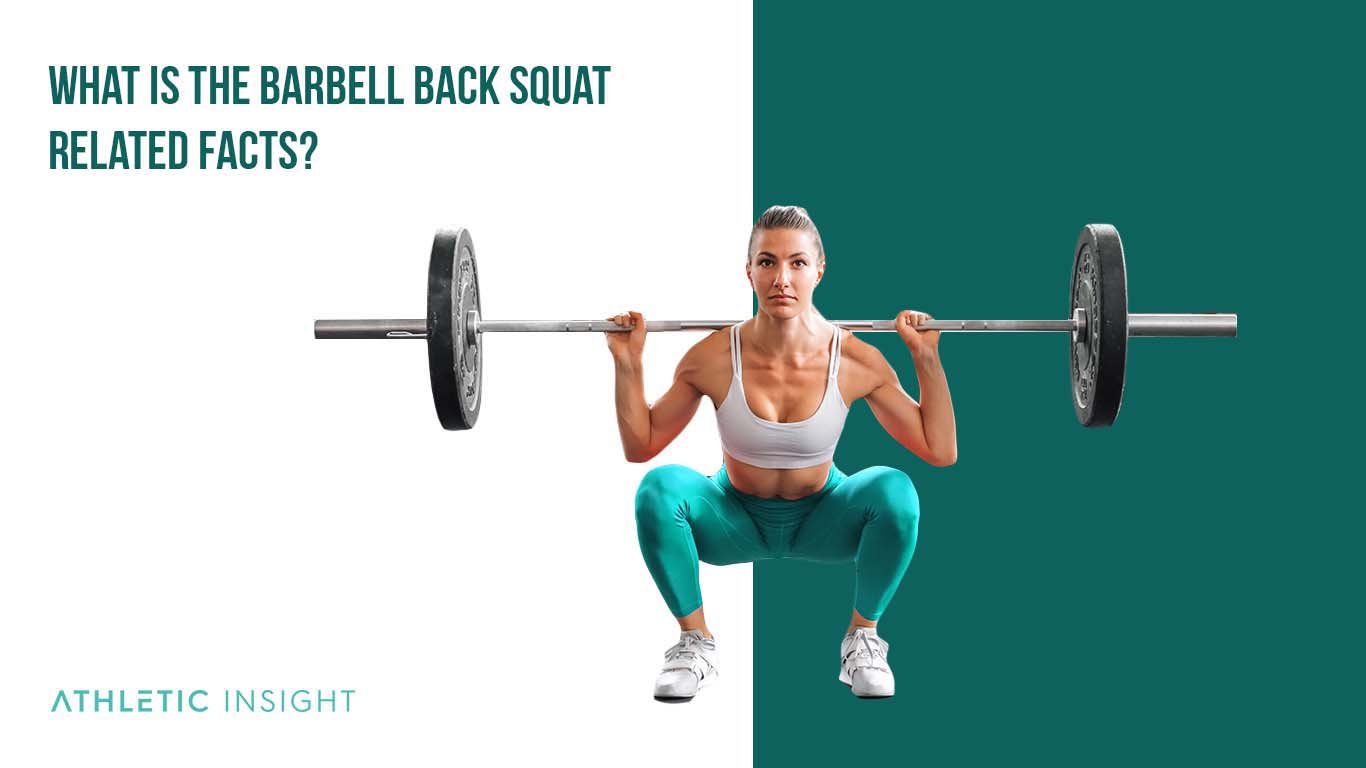
- Stronger leg muscles
- Improved core strength
- Improved mobility
- Increase fat burning
- Stronger joints
- Improved posture
By placing the leg muscles under heavy loads in the back squat, the muscles break down and regrow. Your core stabilizes your body under these heavy loads, increasing its strength. Your body doesn’t normally squat down low with heavy weights on your back. This will improve mobility and range of motion.
By increasing the amount of muscle on your body, your body naturally burns more fat. Squats strengthen your joints, preventing injuries. Back squats strengthen the back muscles and torso, helping fight the internal rotation of the shoulders. This pulls your shoulders back and improves posture.
Does Barbell Back Squat affect the Hormones?
Compound exercises have proven to burn the most fat and release the most testosterone as numerous muscle groups are at work.
Testosterone is the sex hormone responsible for increasing muscle and bone size and strength. By increasing it, the body will build muscle faster.
The legs also contain the largest muscles in the body, leading to even more testosterone and growth hormone release when trained. Human growth hormone is responsible for promoting muscle growth and fat burn.
Cortisol is also released when training legs. Cortisol helps the body respond to stresses and increases fat metabolism.
Is Barbell Back Squat Practiced within Crossfit?
Crossfit is a form of high-intensity interval training to build strength and conditioning. The back squat is performed in Crossfit training along with many other variations of the squat. Crossfit aims to build muscle while also burning fat.
The squat is a great way to do so as so many muscles are required to work, burning more fat. An overhead press will often be done at the top of the squat, further increasing intensity.
Is Barbell Back Squat a Military Movement?
Members of the military must pass rigorous physical tests, so the squat is a great way to prepare them for this. Army Lieutenant Derek Wales states that squats helped him improve speed, core strength, mobility, and vertical jumps. All provided him an advantage in the military. Here are other Military Exercises.
Is Barbell Back Squat Dangerous?
The back squat can be one of the most dangerous movements if done incorrectly. Follow the tips in this article, and the benefits will far outweigh the possible cons. Proper form and using appropriate weight are the main factors. By warming up and taking safety seriously, the squat only brings benefits.
Is Barbell Back Squat an Olympic Lift?
No, the barbell back squat is not performed in Olympic competitions. However, the competitors do use the squat in their training to increase leg strength. It’s very beneficial for building strength for the clean and jerk exercise.

